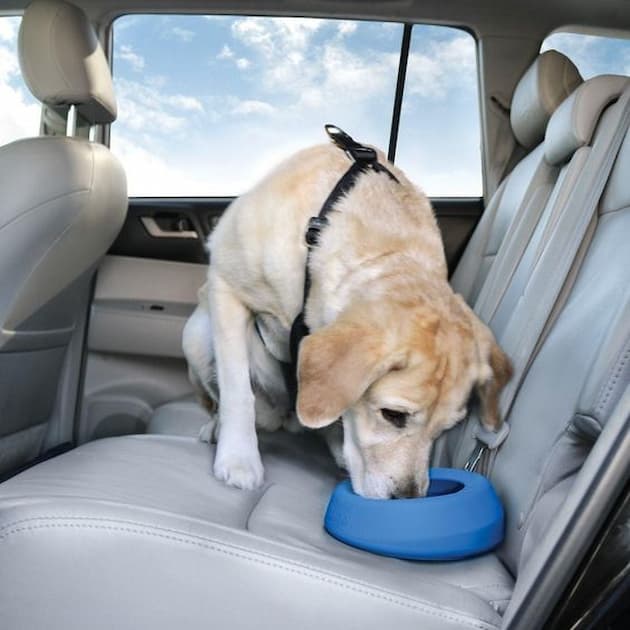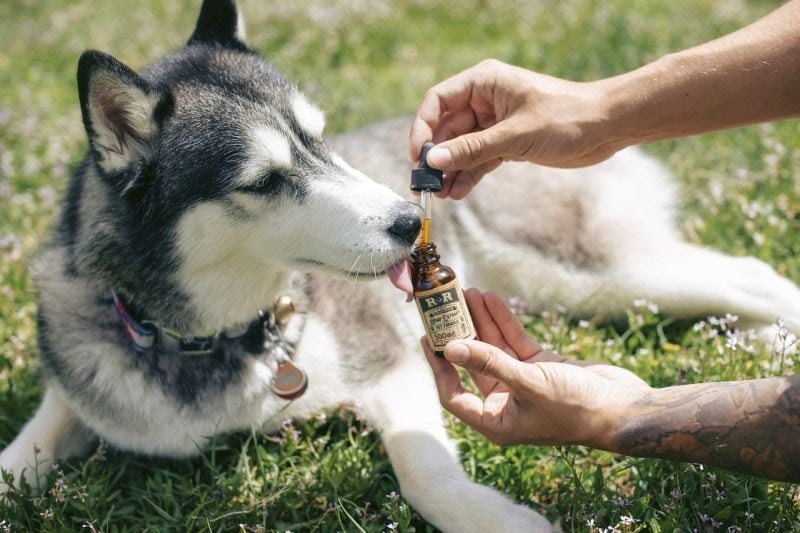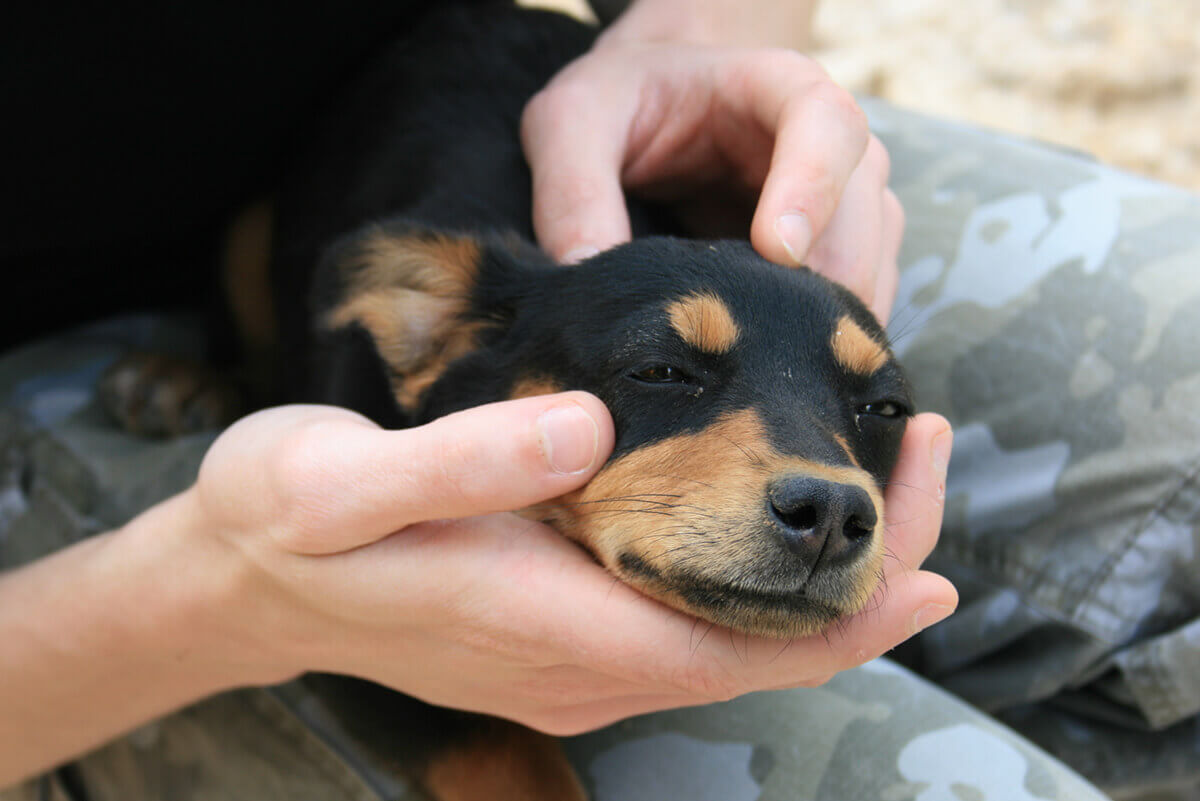Is your Dog anxious or fearful when riding in cars?
Stop Dog from Being Anxious:Dogs don't typically travel in cars. And when they have to, some dogs express their unhappiness by barking or howling, while others become ill. While dogs who enjoy traveling will jump around, chew, and yelp out of excitement.
An unruly dog is detrimental to both you and the Dog. In actuality, the scenario is risky and distracting. If your back seat is taking all your concentration, you may not be paying complete attention to the road, which could result in an accident.
Don't assume your pet will be a model passenger if you plan a long trip with him. You are responsible for instructing him to behave well while traveling and organizing your trip with his needs in mind. The outcome will be a content dog and a safe voyage.
The Typical Dog Car Anxiety Symptoms

ShutterStock
There are numerous ways that dog car anxiety can present itself. Your Dog may be suffering from this ailment if you've seen them doing any of the following before, during, or right after a car ride:
- Sighing or salivating
- Screaming or barking at the vehicle
- Hiding when it's time to get in the automobile
- Pacing or fidgeting when driving
Dogs Who Are Feeling Queasy May Yawn And Drool.
Ever turned around to see your Dog drooling profusely behind the wheel? This could result from motion sickness in your Dog, especially if they are a naturally drooly breed. A dog that gets car ill while traveling is more likely to have car anxiety because they are afraid of being sick.
Another indication that your Dog might be feeling queasy is yawning. Of course, throwing up in the Car will also show that your Dog is motion sick, a condition that can exacerbate dog driving anxiety.
An Anxious Dog May Bark or Whine
If a dog feels worried about getting in the Car or going on a road trip, it may occasionally express its feelings vocally. Your Dog may be communicating with you about their anxiety if you observe them whining as you gather their belongings and open the car door or if they frequently bark while driving. A dog who is usually calm may become very vocal in protest during automobile drives if they experience anxiety.
Does Your Dog Hide Instead Of Going Into The Car?

Richard Unten/Moment Open via Getty Image
If your Dog tends to disappear when it's time to load up, that is another clear indication that they have car phobia. When it comes to something they don't like, including the Car, dogs can be masters of avoidance. When it's time to leave, your Dog may develop canine car anxiety if you can't find him.
Restlessness And Pacing During Car Rides Are Two Forms That Dog Car Anxiety Can Take
Dog owners may occasionally find it difficult and annoying when their Dog exhibits nervousness, especially if one of those signs includes excessive activity in the Car. An anxious dog may find it difficult to sit motionless, making it difficult to find a comfortable position in the automobile. Your Dog may be pacing in the back or sitting and repeatedly repositioning itself after getting up.
Get Started Early

Making an early start does not imply setting your alarm for 7 a.m. on the morning of your trip; rather, it means that you should begin teaching your Dog to like car rides as soon as you receive them. A dog who has never traveled by automobile or has only sometimes done so cannot be expected to adapt quickly to a lengthy journey. Instead, regularly introduce your puppy to the Car.
Read Also:
The Benefits of Bubble Theory Dog Training
Try putting your anxious puppy in the Car for a very short period without even turning the engine on if he is afraid of loud noises or unfamiliar surroundings. When he is satisfied, gradually increase the time, and turn on the engine. With a nervous dog, proceed slowly. You can idle the engine on the drive without leaving. Gradually increase to quick trips to the store. Your Dog will eventually learn to enjoy car rides and be prepared to handle a lengthy trip.
Make The Car A Happy Place.
As creatures of habit, dogs are more likely to agree to a car ride if their surroundings are enjoyable and familiar. Put a familiar toy or blanket in the Car for him. Put a crate in the Car for him to sleep in if you use one inside, and it will fit. As you do around the house, give him the treat to gnaw on when he gets in the Car and commend excellent behavior.
Avoid reprimanding poor behavior like barking. Instead, practice speaking quietly! Try to keep your emotions under control when driving because dogs are sensitive to your moods. Your Dog will probably be content and confident if you are. On the other hand, if you feel uncomfortable and uneasy, your Dog will too.
Desensitization And Positive Reinforcement Will Help Keep A Dog Calm In A Car.
You'll need to utilize some desensitization and positive reinforcement strategies if your Dog has anxiety when riding in a car due to bad associations. Treats can be a fantastic method to quiet a dog that is anxious in the Car (but don't overdo it, or your Dog's diet will suffer). As soon as you get in the Car, give your Dog a treat as a welcome, and keep doing so during the trip. If your Dog has a lot of automobile anxiety, you might even try doing this while parked in the driveway before going anywhere.
Though treatments aren't always smart, if your Dog experiences motion sickness because eating in the Car could make them feel queasy. You can establish pleasant associations by driving to enjoyable locations like the dog park. To avoid upsetting your Dog, try to speak to them gently and drive slowly and cautiously.
Be Sure That Your Dog Has Exercised Before Car Rides.

Giving a dog with automobile phobia lots of exercises beforehand is another method to make them feel more at ease. When your body is worn out from exerting yourself to the fullest and playing and exercising, it's tougher to feel nervous or uncomfortable. Pacing or general restlessness are two symptoms of car anxiety in dogs, so getting them a little exercise before journeys could be the answer.
Prevent Motion Sickness With Changes In The Environment

If your Dog experiences automobile anxiety due to motion sickness, you may need to make some environmental adjustments. Maintaining a cool interior temperature and circulating fresh air throughout the vehicle is crucial. If possible, open the windows. Additionally, it would help if you used a box or a dog seatbelt to secure your Dog securely. Keeping your Dog secure and enjoying a comfortable environment will help lessen some motion sicknesses. Additionally, avoid driving two hours after feeding your Dog.
Don't Feed Your Dog Before a Car Trip
A common pet owner error is feeding their Dog right before a ride or giving them snacks while riding. While not all dogs may be bothered by this, it likely exacerbates the issue for those prone to motion sickness.
Make Very Short Trips a Habit.
Practice taking extremely brief vehicle drives with your Dog—one of the greatest methods to get them accustomed to riding in the backseat. These brief rides can help your Dog become accustomed to traveling in the Car without getting motion sickness because it typically takes motion sickness 10 minutes or more to start. Furthermore, allowing them to get used to the Car's motion might even assist them in finding their sea legs.
Reward and Compliment

Reward and Compliment like other dog phobias, every aspect of ride-car phobia is typically treated through reconditioning and desensitization. This entails rewarding and praising the Dog while exposing him to the Car without boosting his reaction threshold.
For many pets, this would entail starting over, getting in and out of the automobile while it is parked, and repeating with positive reinforcement. Afterward, rewards and praise were again given while driving to the bottom of the drive and back. This can assist in "retraining" your Dog to associate the Car with positive things.
Visit Fun Places
It's simple to forget, but if the only time you take your Dog in the Car is for a trip to the veterinarian where she is prodded and poked, there's a strong possibility you've unintentionally taught her that riding in the Car is the same as seeing the doctor. Why would he despise that Car?
Instead, find reasons to go on quick excursions to enjoyable locations like the dog park, on a date with a favorite canine companion, or to the lake. Your Dog will learn to like the thrill of what awaits after the ride if the rides are brief and the enjoyable ones outweigh the less enjoyable ones.
Try Weighted Blankets

Deep touch pressure is applied slightly differently with weighted blankets. Both compression vests and blankets utilize sensory integration techniques; however, while dogs are at rest, compression vests gently squeeze their bodies while blankets exert direct pressure.
A compression vest can be preferable for dogs who stand or pace restlessly on excursions since weighted blankets only operate when your Dog is lying down or sitting.
Make sure the blanket you choose has a weight that is appropriate for your pet's body weight. Small breeds run the risk of suffocating under very thick blankets. For huge dogs, though, blankets designed for toy breeds certainly won't be adequate.
When traveling with an anxious dog, a weighted blanket may help manage symptoms but is not a cure.
Compression Vest Might Help
Try a compression vest or wrap if you're looking for more all-natural ways to calm your Dog's anxiousness on a journey.
Like swaddling an infant calm, compression wraps for dogs also reduce anxiety. Your Dog should experience pressure when wearing a wrap or vest equivalent to a tight hug. It should be just snug enough to apply even mild pressure without being uncomfortable or impeding movement.
The direct pressure on nerve endings is hypothesized to reduce the body's reaction to other external sensory stimuli. DTP (deep touch pressure) may boost the quality of life of individuals suffering from anxiety, discomfort, and unrest, according to the Journal of Medical and Biological Engineering.
Another Option is CBD Canine Treats

Worried puppy parents often use CBD oil to calm their animals. A byproduct of the hemp plant is CBD. In contrast to THC in medical cannabis, CBD doesn't pose a toxicity or impairment danger to dogs.
According to research, CBD molecules bind to the neuroreceptors that control the release of pleasure hormones and cause feelings of contentment. The additional benefit of CBD is that it lessens nausea and may prevent stomach distress in dogs prone to motion sickness. When. Traveling with a dog, it's a good idea to always keep anti-nausea and soothing medications on hand, even if only in an emergency.
Several CBD dog treats, drops, salves, and even CBD-infused honey products are available on the market, but they may be rather pricey. Although snacks are delightful and honey is a superfood, it is better to consume these things in moderation.
Massage To Reduce Stress

Another deep pressure approach that can occasionally be useful while traveling with anxious dogs is massage.
Your Dog will get the sensory input they need from a thorough rubdown to keep them away from their triggers. Your Dog will feel better knowing you're there for them, even if you're not a terrific masseur. According to research, when humans pet dogs, stress-relieving endorphins are released.
Professionals in dog training advise practicing massage techniques while your Dog is relaxed because trying new things when a dog is upset can worsen the situation. Want some advice? Check out this tutorial on giving your Dog a wonderful noggin rub or our canine deep tissue massage technique guide.
If Everything Else Fails, Consult Your Veterinarian.
You should consult your veterinarian if your Dog exhibits severe travel anxiety or if it seems to be getting worse. Your veterinarian can help you devise a strategy for dealing with your pet's episodes and identify whether underlying problems are to blame for your Dog's nervousness.
Numerous prescription drugs on the market could improve your Dog's condition. To reduce your Dog's stress, your veterinarian may recommend sedatives, anti-depressants, anti-anxiety medications, or a combination.


